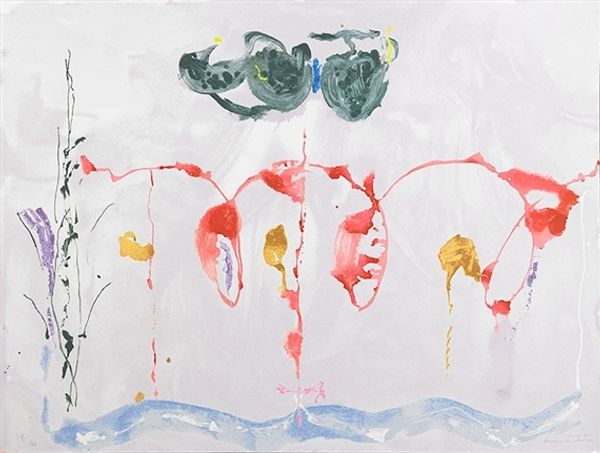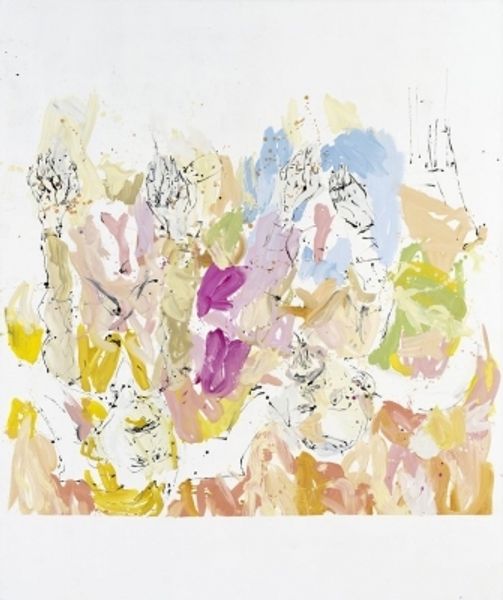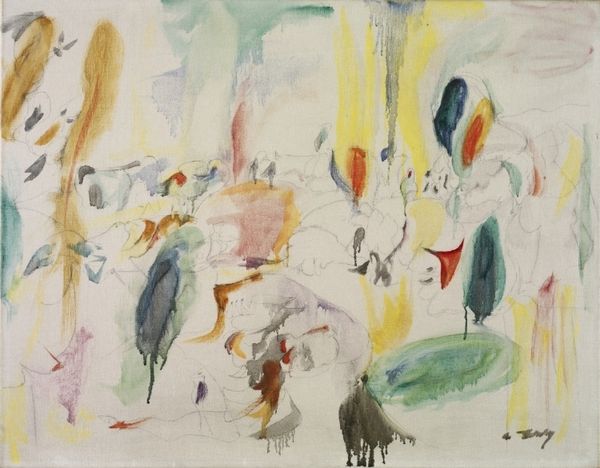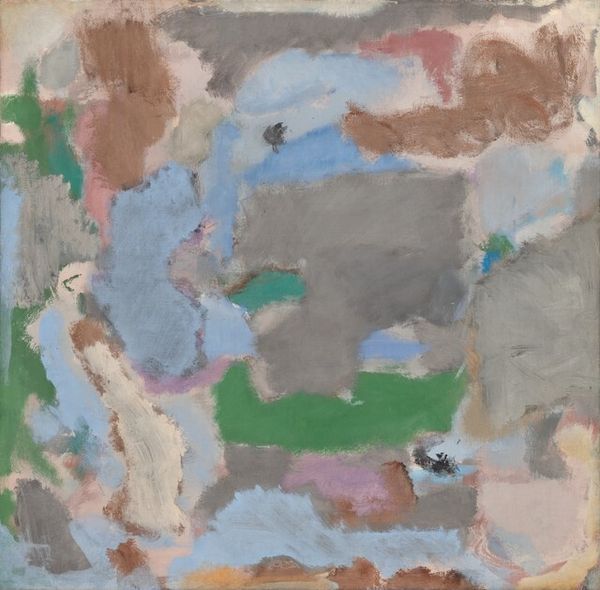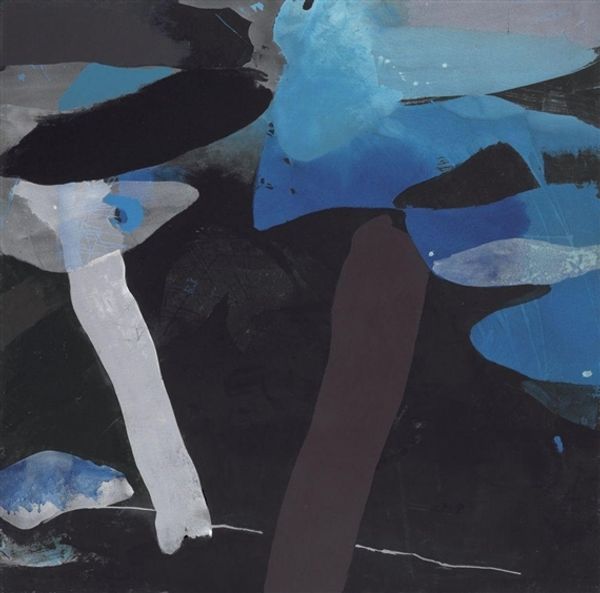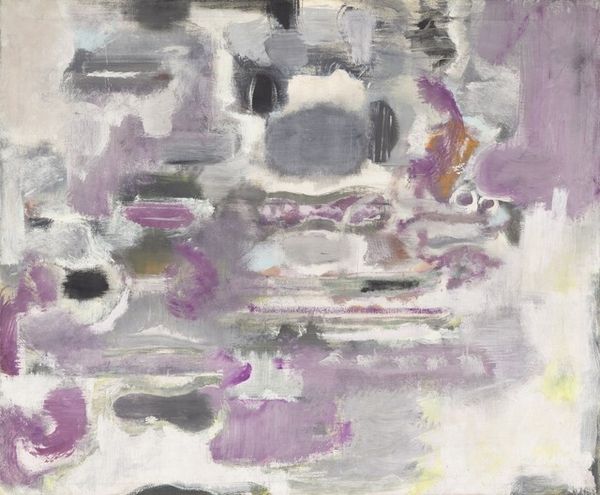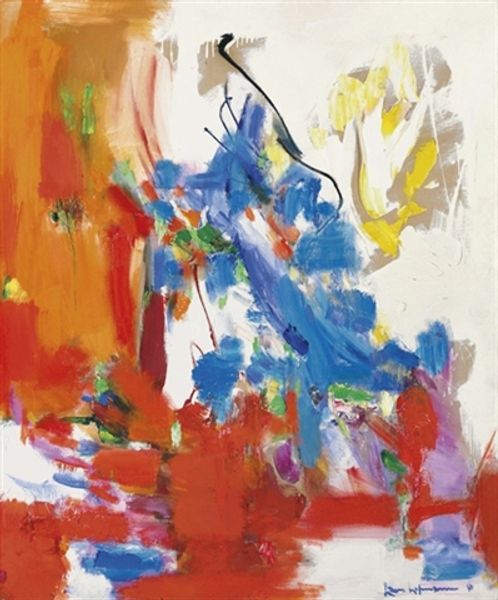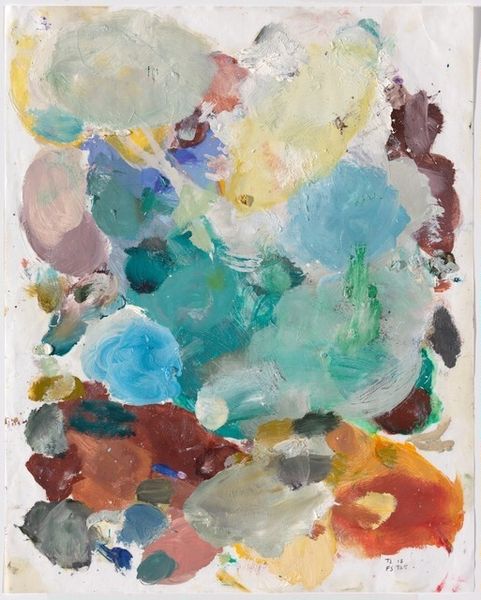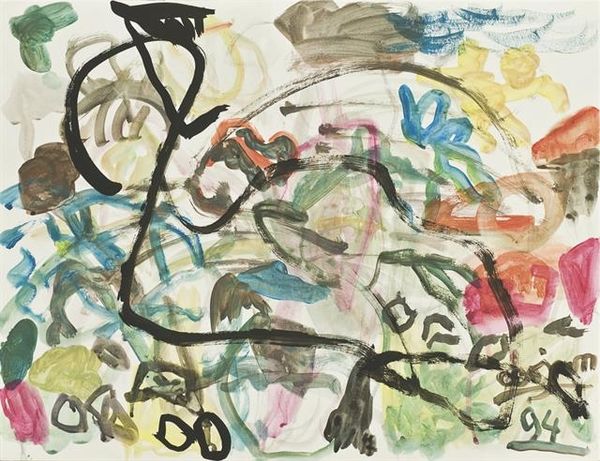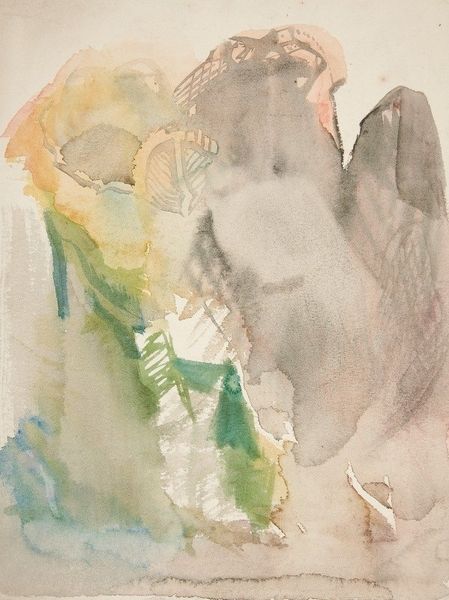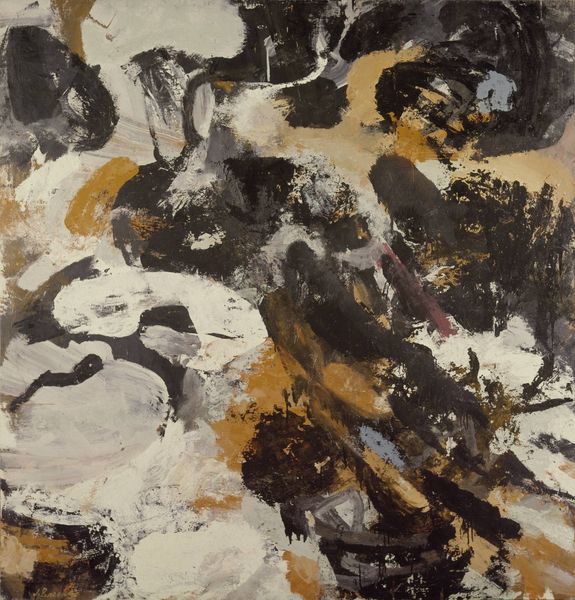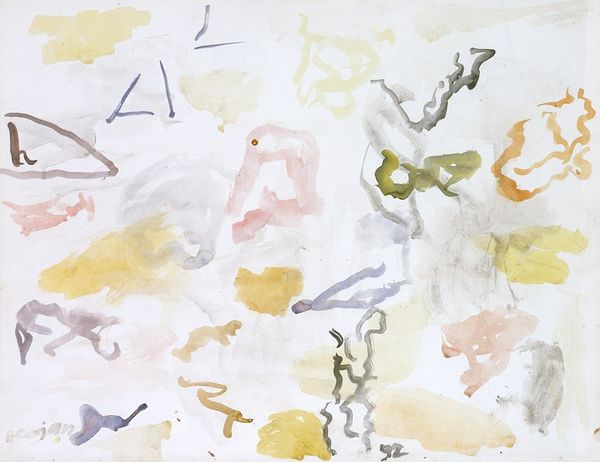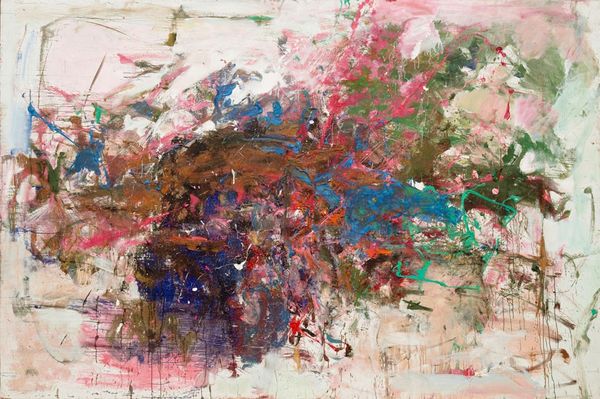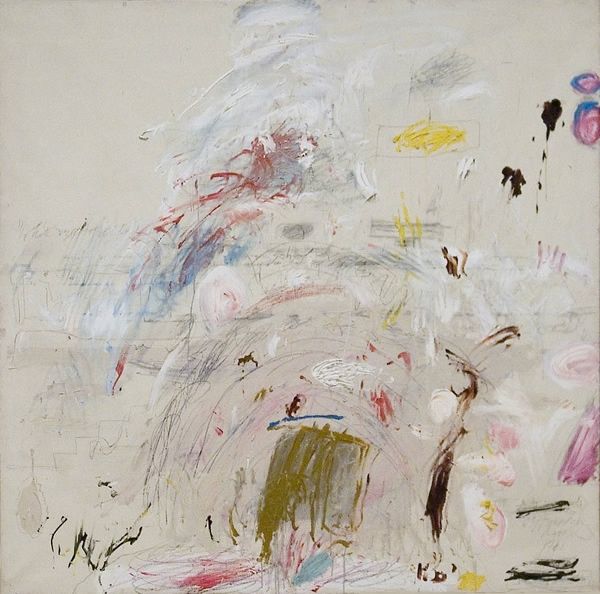
watercolor
#
abstract painting
#
water colours
#
watercolor
#
abstraction
#
modernism
#
watercolor
Copyright: Aurel Cojan,Fair Use
Editor: Here we have Aurel Cojan’s "Nature Morte," a watercolor work. There isn't a known exact creation date. It strikes me as both delicate and chaotic at the same time. What do you see in this piece? Curator: The title, "Nature Morte," or "Still Life," sets up a traditional expectation, which is immediately subverted by the abstract forms. Considering Cojan’s possible historical context, post-war art and the rise of abstraction as a form of quiet resistance become really interesting. The fluid watercolor blurs clear definition; does that strike you as intentional? Editor: It could be. The lack of distinct forms definitely makes it more open to interpretation. How does it relate to themes of identity, gender, or race? Curator: Think about it this way: traditional still life often depicts domestic objects, historically associated with women's spaces. By abstracting it, Cojan disrupts that visual tradition and opens up that very restricted pictorial space. He pushes back against a very gendered definition of genre. Do you feel the colours suggest certain emotional tones or social undercurrents? Editor: The muted palette could reflect a kind of restraint. Almost as if emotions are being processed indirectly, not head-on. Curator: Precisely. Perhaps the act of abstracting everyday objects represents a struggle to redefine and reclaim his artistic narrative, resisting established power dynamics of the time? Editor: That’s a very interesting perspective. I’ll never look at still life the same way. Curator: Me neither. Thinking about art through an activist lens really changes our understanding.
Comments
No comments
Be the first to comment and join the conversation on the ultimate creative platform.
